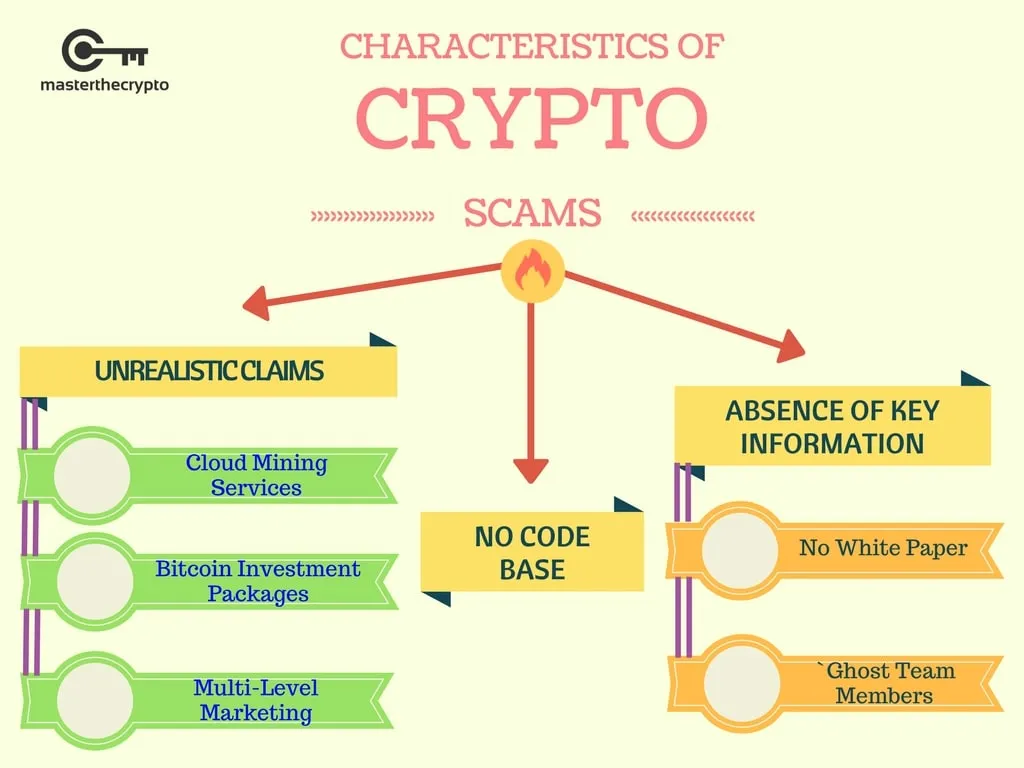Good day everyone I would be informing you guys about some of the major scams that happened in the cryptocurrency world last year.
There are many ways in which individuals are scammed of their coins and daily you find a lot of fraudsters coming up with creative ways to take advantage of people in order to enrich themselves.
I would be highlighting a few in this article while also informing you of some major scams in the world of cryptocurrency.
- Ponzi Schemes (Projects):A Ponzi scheme is an investment scam that involves the payment of purported returns to existing investors from funds contributed by new investors. Ponzi scheme organizers often solicit new investors by promising to invest funds in opportunities claimed to generate high returns with little or no risk. It exists at the expense of new investors. When there are no investors anymore, the project collapses and the knowledge of the project being a scam is revealed.
- Shady or Overnight Exchanges: As a crypto coin holder you would mainly hope to exchange the coin you posses for a coin that outperforms it in order to make some gains there by bringing the need for exchanges that support the coin you posses. Fraudsters therefore take advantage of this to rip off individuals of their money by creating shady exchanges and having deal men who convince people to deposit their money into these exchanges after which the deal man informs this persons that the price of the coins that was been exchanged for had dropped and that the deposited money is lost, thereby enriching the shady dealer and denting your portfolio. Examples include exchanges like 01crypto, Btc-cap, Capital-coins, Coinquick, Cryptavenir, Crypto-banque, Crypto-infos, Cryptos.solutions, Cryptos-currency, Ether-invest, Eurocryptopro, Finance-mag, Gme-crypto, Gmtcrypto, Good-crypto, Mycrypto24, Nettocrypto, Patrimoinecrypto, and Ydconsultant.
- Pump and Dump Scams:
Pump and Dump scams are not exactly new. Economic analysts argued that this type of fraud goes all the way back to the early 18th century, with the presence of internet and social media these scammers have been able to attract more investors.
Pump and Dump (P&D) it’s a plot aimed at inflating the price of a coin in a bid to buy low and sell high. What happens is when the scammers dump their ill-gotten coins, the prices will plummet, leading to investors losing their money fast.
The process takes quite a lot of people in order to pull this off with the scammers usually assembling over major social media platforms like Facebook, Telegram and Whats app. with such groups having as much as 100,000 members.
The aim is to manipulate the price of altcoins with low market caps by using various tools to monitor volumes with a major step involving identifying coins with good scheming potential then buying low and watching the prices of these coins go down.
Here are the major cryptocurrency scams of 2019
- South Korean Ponzi Scheme steals $18.7 Million.
A groups of AI specialist were able to unravel a multi-million dollar Ponzi scheme that had swindled up to 60,000 financial specialists with an Unlisted M- token having a guarantee to bring in 600% profit which lured investors with little experience of exchanges.
This case demonstrated the handiness of AI for crypto agents. The calculations were prepared to recognize watchwords identified with unreasonable guarantees and individuals’ motivating force plans, which are run of the mill of staggered showcasing. This innovation has the potential for a more extensive application
- Typosquatting Trick steal $27 million In Europe
Typo squatting is also called URL hijacking, a sting site, or a fake URL, is a form of cyber squatting, and possibly brand jacking which relies on mistakes such as typos made by Internet users when inputting a website address into a web browser. Should a user accidentally enter an incorrect website address, they may be led to any URL (including an alternative website owned by a cyber squatter).
The Trick was used by some individuals in Europe in which 4,000 people were exploited ad lost tokens across 12 European nations.
Here are some examples of Typosquatting
Real domain intended Typosquat Domain
www.binance.com www.bitance.com
www.victoriassecret.com www.victoriasecret.com
www.homedepot.com www.homdepot.com
- Binance Hack resulting Loss of $40 million
Binance one of the world’s biggest digital money exchanges, had BTC worth $40 million stolen in May. It was pretty impressive to see Binance get hacked with hackers managing to take 7,000 BTC while also revealing two-factor confirmation codes and Application Programming interface (API) tokens. It was revealed that hackers had options available to compromise exceptionally high net-worth accounts. despite the theft there was not much effect as the $40 million worth of BTC was just 2% of Binance general trade property.
Here are the Ways Hackers attack Cryptocurrency
Apps with Mining malware
Mining bots spreading through social media
Cryptocurrency wallet hacking
Compromised "Tech Support" Websites
Websites using mining scripts
Exploits kits dropping mining malware
Ad networks delivering miners.
In light of these scams and methods of scamming, it is of great need that we are very careful in our actions with people, sites we visit and investment opportunities we trust in order not to get Rekt and loose our hard earned money.
I would be dishing out more information on scams and method of scamming in order get everyone informed about it and thereby reducing its occurrence.
Yours Faithfully Napcalx.
